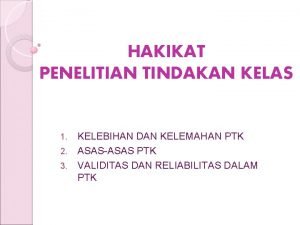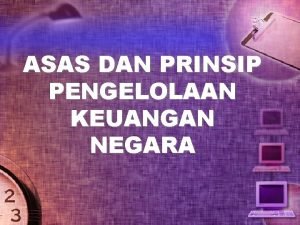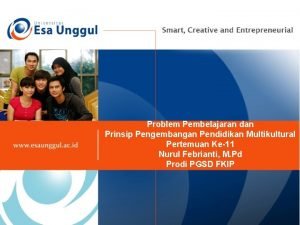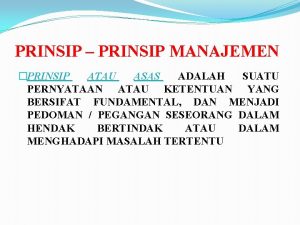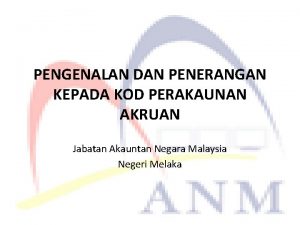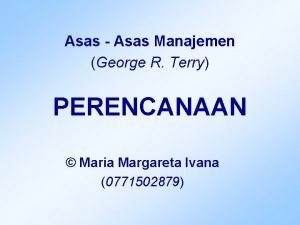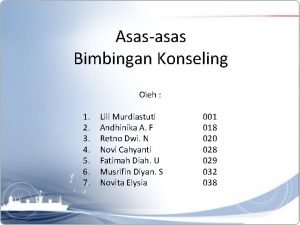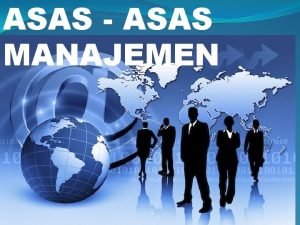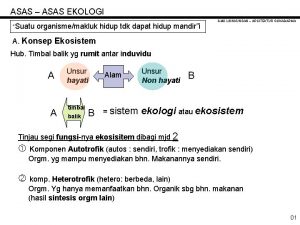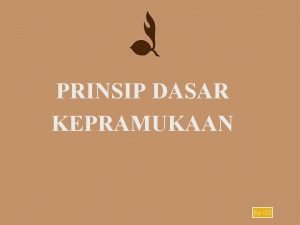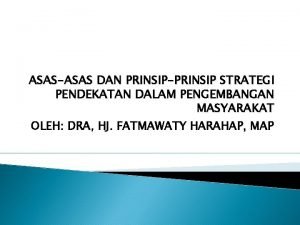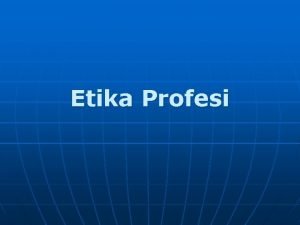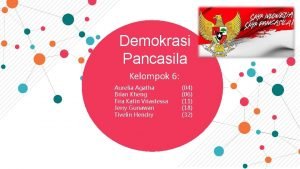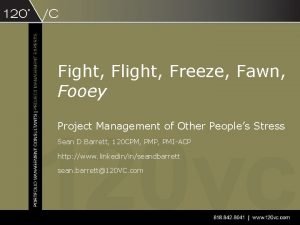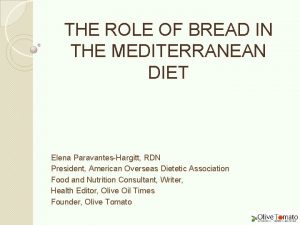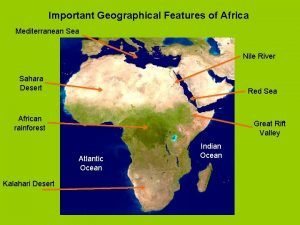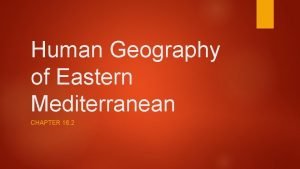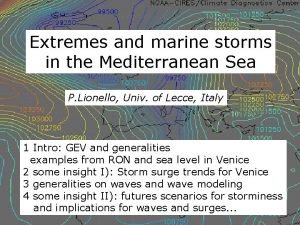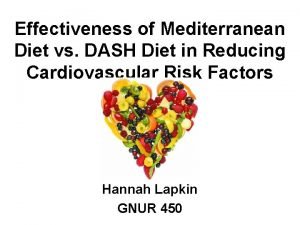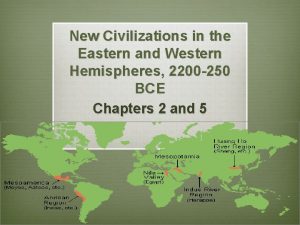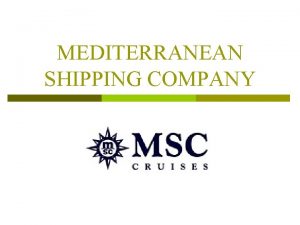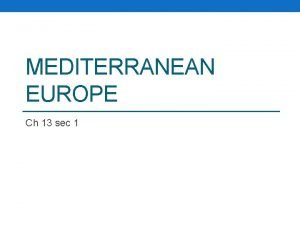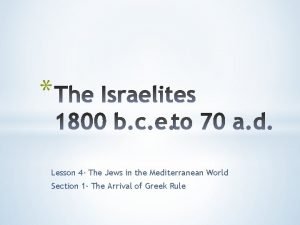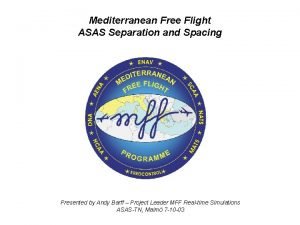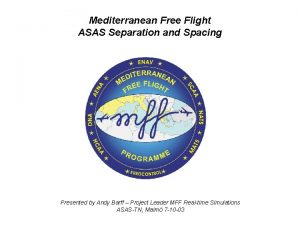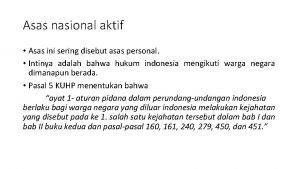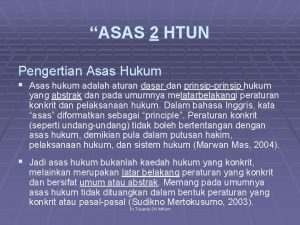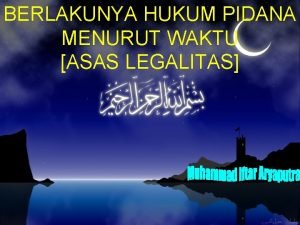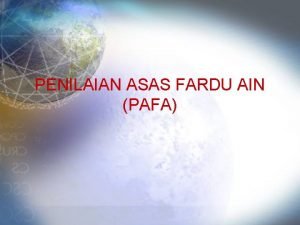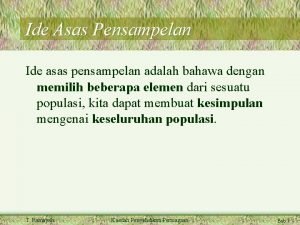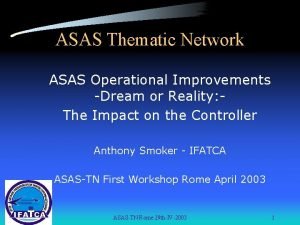MEDITERRANEAN FREE FLIGHT Flight Trials Report ASAS TN
































- Slides: 32

à MEDITERRANEAN FREE FLIGHT Flight Trials Report ASAS TN 2 1 st Workshop | 26 -28 September 2005, Malmö Gennaro GRAZIANO MFF is a EC Co-funded Programme 1

MFF | FLIGHT TRIALS REPORT à Objectives àTo present the organisation structure and the technical infrastructure used during flight trials àTo provide first results of the MFF flight trials based on pilots and ATCOs feedback 2

MFF | FLIGHT TRIALS REPORT à Outline àThe MFF Project and its applications àThe role of Flight Trials in MFF Validation àFT Rules and Organisation àFT Validation Platform àCDTI and Airborne architecture àFT execution phases àInitial results 3

MFF | FLIGHT TRIALS REPORT à The MFF Project MFF main objectives are: à To provide operational requirements and procedures based on the use of new CNS/ATM technologies enabling the introduction of ASAS and Free Flight operations in Mediterranean area; à To address fight transition issues between FFAS and any other airspace (MAS in fixed routes or free routes, UMAS); à To provide users community with results to address standardisation and further maturation of relevant CNS/ATM technologies and applications both in ground systems and avionics à MFF Consortium is composed of: ENAV, AENA, DSNA, EUROCONTROL, HCAA, LFV, MATS, NLR, UK NATS. 4

MFF | FLIGHT TRIALS REPORT à MFF Applications A 1 – Free Route A 2 – Air Traffic Situation Awareness A 3 – ASAS Spacing à Remain Behind, Heading then Remain Behind à Merge Behind, Heading then Merge Behind A 4 – ASAS Separation à Lateral separation (Pass behind, Pass abeam) à Vertical separation (Pass above, Pass below) à Longitudinal separation (Remain behind, Merge behind) A 5 – Airborne Self Separation 5

MFF | FLIGHT TRIALS REPORT à MFF Applications – Delegation levels A 3 – ASAS Spacing à Execution of a separation value required by ATC. The flight crew is responsible for applying the spacing clearance issued by ATC with respect to another aircraft, while maintaining and monitoring the separation value required by ATC. A 4 – ASAS Separation à Provision and monitoring of airborne separation from one aircraft specified by ATC. The flight crew is responsible for providing aircraft separation in accordance with separation minima required for safe operations, and deciding on the means by which to provide it under possible ATC restrictions (related to the surrounding traffic or airspace). A 5 – Airborne Self Separation à Airborne self-separation of an aircraft with respect to the surrounding traffic (without ATC support). 6

MFF | FLIGHT TRIALS REPORT à The Role of FT in MFF Concept Development (WA 2) Fast Time Simulations (WA 3) • Acceptance of concepts and procedures Flight Trial (WA 5) • workload issues • Pilot situation awareness • Suitability of tools and HMI in a real environment Real Time Simulations (WA 4) 7

MFF | FLIGHT TRIALS REPORT à FT Area à Designed as a dedicated area to avoid interference with GAT/OAT activities à Designed in cooperation with ITAF, Rome ACC and several APPs à Reserved on permanent base to MFF during week ends (AIP Suppl. ) à Coordinated on tactical base with ITAF 8

MFF | FLIGHT TRIALS REPORT à Flight Trials Rules à Flights performed in a FTDA à Separation minima: à 1000 ft minimum vertical separation (also in S&M) à 8 Nm minimum (ASAS Spacing, Separation) à 5 Nm minimum separation, but 1000 ft vertical separation for FF Application à VMC day light operation à Surveillance à Radar monitoring à ADS-B/TIS-B à MFF dedicated Teams at Roma ACC and Experimental Centre 9

MFF | FLIGHT TRIALS REPORT à FT Organisation Ciampino Aircraft Base CAB Coordinator Flight Crews Technical Team Roma ACC ENAV SEC MFF ACC Supervisor MFF ACC ATCOs Technical Team HF Observers Experiment Leader MFF ESEC Supervisor MFF ESEC ATCOs Technical Team HF Observers 10

MFF | FLIGHT TRIALS REPORT à FT Validation Platform 11

MFF | FLIGHT TRIALS REPORT à The Aircraft ENAV Cessna Citation S-II NLR Metroliner II AENA Beechcraft King Air A-100 12

MFF | FLIGHT TRIALS REPORT à The Aircraft NLR Cessna Citation II ENAV Falcon 20 13

MFF | FLIGHT TRIALS REPORT à CDTI/ND Aircraft were equipped with: à VDL M 4 transponder à CDTI à Based on ETG 2500 and further developed according to MFF requirements à integrated ASSAP to support the ASAS and FF manoeuvre execution à CDTI non integrated with avionics systems 14

MFF | FLIGHT TRIALS REPORT à Airborne Architecture 15

MFF | FLIGHT TRIALS REPORT à CDTI Main display area Target data area 3 1 1 4 2 Key label bar 2 Application data area 16

MFF | FLIGHT TRIALS REPORT à CDTI 17

MFF | FLIGHT TRIALS REPORT à CDTI 18

MFF | FLIGHT TRIALS REPORT à NLR Aircraft – Navigation Display 19

MFF | FLIGHT TRIALS REPORT à FT Execution Phases: 1. Missions design à FT master list à Exercise design (test cards) 2. Training à Theory (class lectures) à Practices (CDTI and cockpit simulators) 3. Missions rehearsal à aimed to examine the dynamics of missions to establish their practicability, usefulness and effectiveness à consolidation of training à evaluation of the “flight test data cards” 20

MFF | FLIGHT TRIALS REPORT à FT Execution Phases: 4. Execution à 1 real a/c vs 1 cockpit simulator à 1 real a/c vs 1 real aircraft à 1 real a/c vs 2 real a/c Total number of flight hours: 255 FIRST TIME IN EUROPE 21

MFF | FLIGHT TRIALS REPORT à FT execution Tipycal Mission: à LIRA-LIRA à Y & Z FPLs à FL 180 -190 à Duration: 3 h 30 m IFR LIRA VFR à Each mission is composed of a set of exercises aimed to evaluate a specific validation objective 22

MFF | FLIGHT TRIALS REPORT à Initial Results – ASAS Spacing à Pilots and ATCOs stated the allocation of responsibility and tasks between ATC and aircrew are acceptable. à ASAS Spacing operations increase pilots’ workload, but within acceptable limits; required attention for the CDTI/ASSAP was considered high. Further improvements on the CDTI/ASSAP (e. g. aural warnings) and its integration with avionic systems will reduce pilot workload. à Pilots and ATCOs found the phraseology long and complicated and inducing an increase of the perceived workload. The communication overhead should be reduced. à During FT the situational awareness was judged adequate by the pilots, even if they want to be informed/aware when they are target of a delegation. à The concept of tolerance should be included for the delegation parameters. 23

MFF | FLIGHT TRIALS REPORT à Initial Results – ASAS Spacing à The ASAS Spacing algorithm should take into account aircraft performance and passengers’ comfort. à Both Pilots and ATCOs should be provided with tools to a priori assess the feasibility of the delegation instructions. 24

MFF | FLIGHT TRIALS REPORT à Initial Results – ASAS Separation à Pilots stated the allocation of responsibility and tasks between ATC and aircrew are acceptable. à ASAS Separation acceptability for ATCOs should be further investigated, especially with reference to contingencies and critical situations, where ATCO has no time to prevent a loss of separation. To reduce ATCO workload, monitoring of ASAS traffic should not be requested, however it is still an open issue to be better investigated and clarified. à ASAS Separation operations increase pilots’ workload, but within acceptable limits; required attention for the CDTI/ASSAP was considered high. Further improvements on the CDTI/ASSAP (e. g. aural warnings) and its integration with avionic systems will reduce pilot workload. à During FT the situational awareness was judged adequate by pilots, even if they want to be informed/aware when they are target of a delegation. 25

MFF | FLIGHT TRIALS REPORT à Initial Results – ASAS Separation à Pilots and ATCOs found the phraseology long and complicated and inducing an increase of the perceived workload. The communication overhead should be reduced à The ASAS Spacing algorithm should take into account aircraft performance and passengers’ comfort. à ATCOs expressed the need to have ADS-B Intent information; à The concept of tolerance should be included for the delegation parameters. à Both Pilots and ATCOs should be provided with tools to a priori assess the feasibility of the delegation instructions. 26

MFF | FLIGHT TRIALS REPORT à Initial Results – Airborne Self Separation à During FT pilots positively accepted A 5 because of several positive effects (no R/T, more flight efficiency, low workload) à Pilot workload remains well within tolerable limits, even if workload should be assessed in a more realistic environment with more traffics and more complex geometries. à During FT no workload peaks were experienced à During FT the situational awareness was judged adequate. Aural warnings in case of conflict are strictly necessary. à Airborne Self Separation would benefit from having a fully integrated system coupled to the aircraft’s FMS and autopilot. à The concept of tolerance should be included for the application parameters. 27

MFF | FLIGHT TRIALS REPORT à Conclusions: the MFF WORKSHOP MFF Final Workshop “Moving closer to Free Flight in the Mediterranean” Rome – 1, 2 December 2005 The key objective of the workshop is to present the results of the innovative concepts, procedures and supporting technologies which have been assessed and simulated in five years. The focus will be on operational validation activities. . Further information may be obtained on www. medff. it or writing to workshop_secretariat@medff. it 28

MFF | FLIGHT TRIALS REPORT 29

MFF | FLIGHT TRIALS REPORT 30

MFF | FLIGHT TRIALS REPORT 31

MFF | FLIGHT TRIALS REPORT Thank you for your attention 32
 Asas penelitian tindakan kelas
Asas penelitian tindakan kelas Asas rangkaian kerja adalah
Asas rangkaian kerja adalah Asas asas umum pengelolaan keuangan negara
Asas asas umum pengelolaan keuangan negara Asas-asas dalam pendidikan multikultural
Asas-asas dalam pendidikan multikultural Stability of tenure of personnel
Stability of tenure of personnel Senarai kod carta akaun asas akruan
Senarai kod carta akaun asas akruan Asas akruan maksud
Asas akruan maksud Tipe perencanaan asas asas manajemen
Tipe perencanaan asas asas manajemen Pentingnya kesejahteraan karyawan adalah …. *
Pentingnya kesejahteraan karyawan adalah …. * Asas-asas bimbingan konseling
Asas-asas bimbingan konseling Fungsi manajemen controlling
Fungsi manajemen controlling Asas ekologi
Asas ekologi Asas yang digunakan dalam gerakan pramuka adalah asas
Asas yang digunakan dalam gerakan pramuka adalah asas Asas asas pengembangan masyarakat
Asas asas pengembangan masyarakat Etika profesi menurut kbbi
Etika profesi menurut kbbi Brian kheng
Brian kheng Hubungan etnik bab 2
Hubungan etnik bab 2 Sutterhe
Sutterhe Indoor free flight plans
Indoor free flight plans Unit 2 the united states and canada
Unit 2 the united states and canada Mediterranean diet pyramid oldways
Mediterranean diet pyramid oldways Make everyday mediterranean
Make everyday mediterranean Africa mediterranean
Africa mediterranean Chapter 16 eastern mediterranean answers
Chapter 16 eastern mediterranean answers Storms in the mediterranean sea
Storms in the mediterranean sea Dash diet vs mediterranean diet
Dash diet vs mediterranean diet Greek colonies in the mediterranean
Greek colonies in the mediterranean Ancel keys mediterranean diet
Ancel keys mediterranean diet Mediterranean civilizations location hemisphere
Mediterranean civilizations location hemisphere Gianlucci
Gianlucci Chapter 13 section 1 mediterranean europe
Chapter 13 section 1 mediterranean europe What was life like for the jews in greek ruled lands
What was life like for the jews in greek ruled lands Function of lenticels
Function of lenticels
